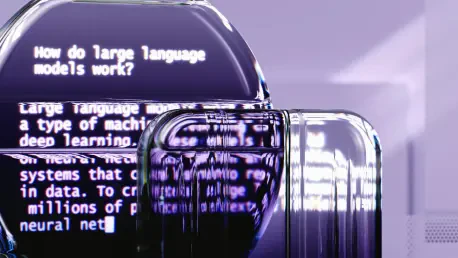Setting the Stage for Tech Supremacy
In the high-stakes arena of global technology, the United States faces a critical challenge: securing the talent necessary to maintain leadership in artificial intelligence (AI). With AI projected to contribute $15.7 trillion to the global economy by 2030, according to industry forecasts, the race for innovation is not just a corporate concern but a national imperative. The #-B visa program, a key mechanism for attracting skilled foreign workers, stands at the heart of this battle. Yet, its outdated structure threatens to stifle progress in a sector where speed and expertise are paramount. This market analysis delves into how reforming this visa system can unlock significant growth opportunities, bolster AI development, and ensure American companies remain competitive on the world stage.
Market Dynamics and Talent Trends in AI
Current Talent Gaps Stifling AI Growth
The AI sector in the United States is grappling with a profound shortage of specialized talent, a barrier that directly impacts market expansion. Data from recent labor market studies indicate that demand for professionals in machine learning, data science, and system architecture far exceeds supply, with thousands of roles remaining vacant for extended periods. The #-B visa program, capped at 85,000 slots annually, struggles to address this gap due to its lottery-based selection process, which often overlooks merit in favor of chance. This inefficiency delays critical projects, from AI-driven cybersecurity solutions to healthcare innovations, costing companies millions in lost opportunities and hampering overall industry momentum.
Global Competition Reshaping Talent Acquisition
Beyond domestic shortages, the global landscape for AI talent acquisition reveals a stark competitive disparity. Nations such as Canada and Germany have streamlined immigration policies, offering expedited visa processes that attract top minds within weeks. In contrast, the U.S. system, bogged down by bureaucratic delays and rigid quotas, can take months or even years to process applications. This discrepancy drives elite AI professionals toward more welcoming markets, diminishing America’s appeal as a tech hub. Market projections suggest that countries with agile talent policies could capture a larger share of AI innovation by 2027, leaving the U.S. at risk of losing ground in setting global standards.
Economic Impacts of Visa Constraints on AI Markets
The economic ripple effects of restrictive visa policies are evident in the AI industry’s growth trajectory. Research from economic think tanks highlights that foreign STEM workers contribute significantly to job creation, with each temporary worker generating between 5 and 7.5 domestic positions through innovation-driven expansion. Moreover, a 1% increase in foreign STEM talent correlates with a 7-8% rise in native workers’ wages, debunking myths of job displacement. Current #-B limitations, however, curb these benefits, constraining market scalability and reducing the sector’s ability to drive broader economic gains. Reforming the system could unleash a multiplier effect, amplifying investment and productivity across tech ecosystems.
Future Projections: AI Market Evolution Through Policy Reform
Emerging Trends in AI Talent Demand
Looking ahead, the AI market is poised for transformative shifts heavily influenced by talent access. Emerging applications, such as AI integration into national defense systems and smart infrastructure, demand highly specialized skills often found beyond domestic borders. Industry forecasts predict a doubling of demand for AI experts by 2027, underscoring the need for policy frameworks that can keep pace. Without reforms to visa programs, American firms may struggle to meet these needs, potentially ceding market share to international competitors who prioritize talent mobility.
Potential Regulatory Shifts and Market Outcomes
Regulatory changes to the #-B visa program could significantly alter market dynamics in the AI sector. Proposals under discussion, such as increasing visa caps for STEM fields or introducing sector-specific tracks, promise to align talent inflow with strategic priorities. Market analysts anticipate that such reforms would accelerate project timelines, enhance innovation cycles, and attract substantial venture capital to U.S.-based AI startups. If implemented effectively, these changes could position the United States as the undisputed leader in AI deployment, shaping global benchmarks and ethics in the process.
Risks of Inaction in a Hyper-Competitive Landscape
Conversely, failure to adapt visa policies poses substantial risks to market positioning. Projections indicate that sustained talent shortages could delay critical AI advancements, from autonomous vehicle systems to personalized medicine, by several years. This lag would not only impact corporate bottom lines but also weaken national influence over international AI governance. As competitor nations capitalize on open talent policies, the U.S. could face a diminished role in a market expected to redefine economic power, with long-term consequences for both industry and geopolitical standing.
Reflecting on Strategic Pathways Forward
Looking back on the analysis, it becomes evident that the intersection of #-B visa reform and AI market growth holds profound implications for American competitiveness. The talent shortages, global disparities, and economic constraints highlighted in the discussion paint a clear picture of a system in urgent need of overhaul. Delving into future projections further underscores that the stakes extend beyond immediate industry needs to encompass national security and global influence.
Moving forward, strategic actions emerge as critical to harnessing the full potential of AI markets. Policymakers are urged to transition the #-B program to a merit-based framework, prioritizing high-impact fields like AI with increased or waived visa caps. Businesses, in turn, need to advocate for expedited processing times while investing in domestic skill development to complement foreign talent. These steps, combined with public-private partnerships to identify and recruit global innovators, offer a roadmap to transform policy barriers into market advantages, ensuring sustained leadership in a tech-driven world.









